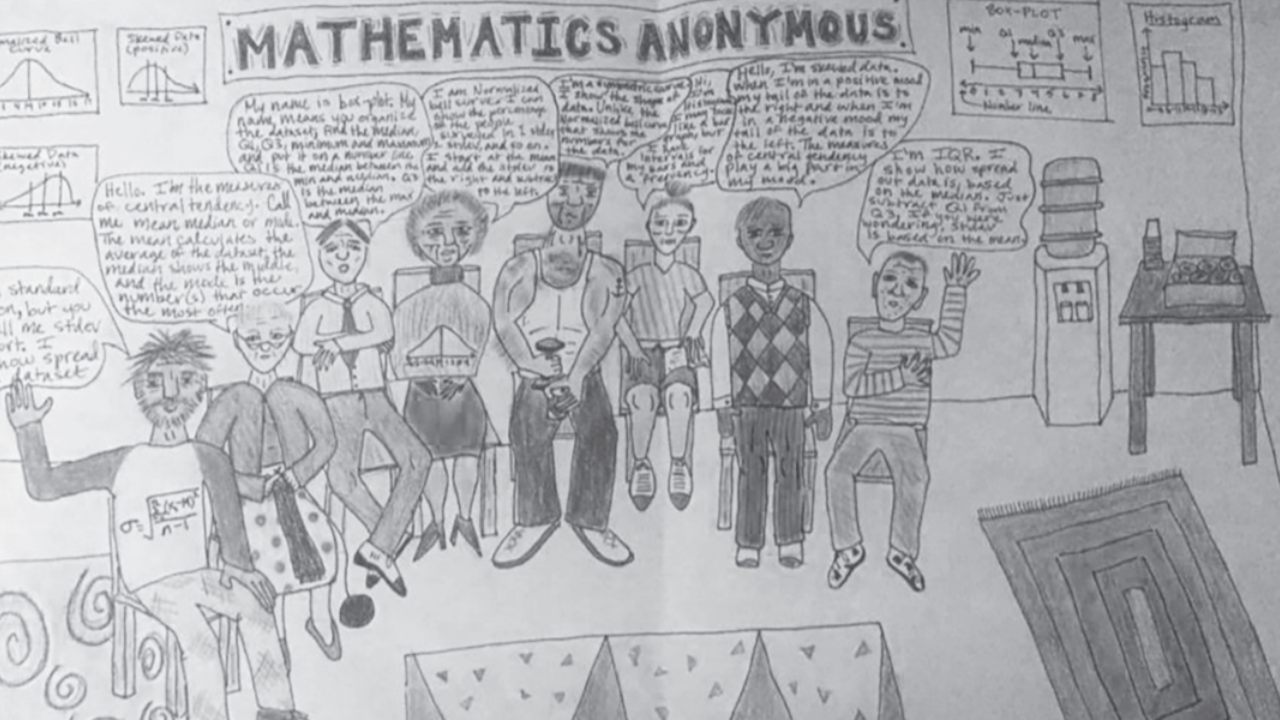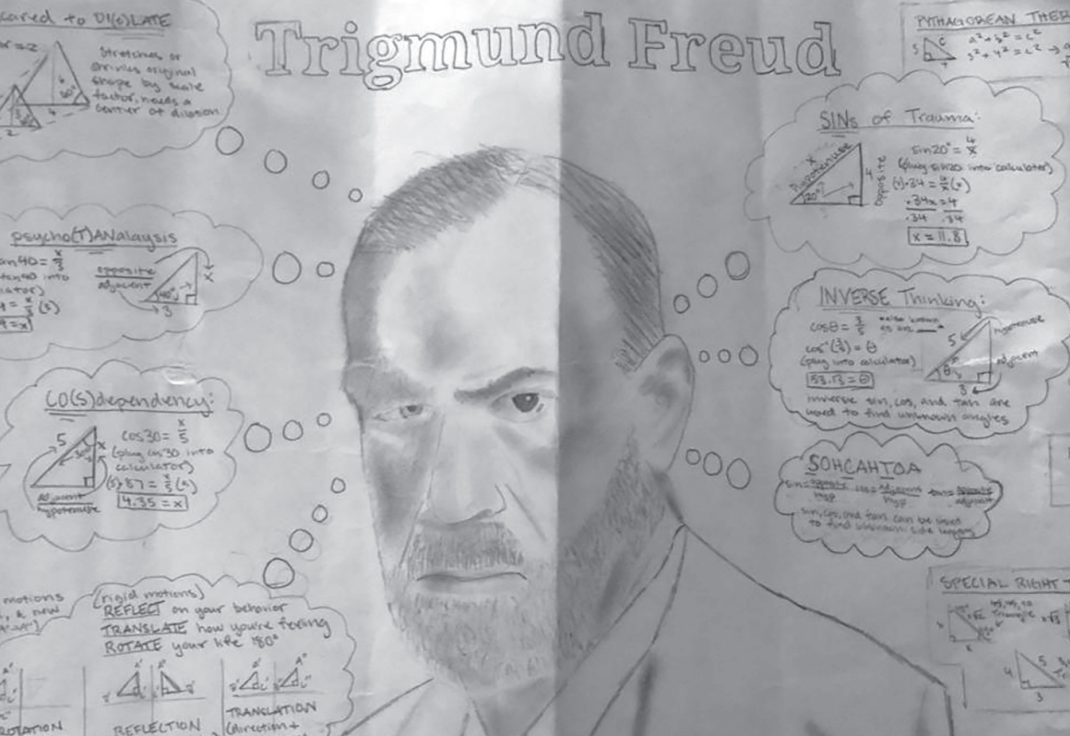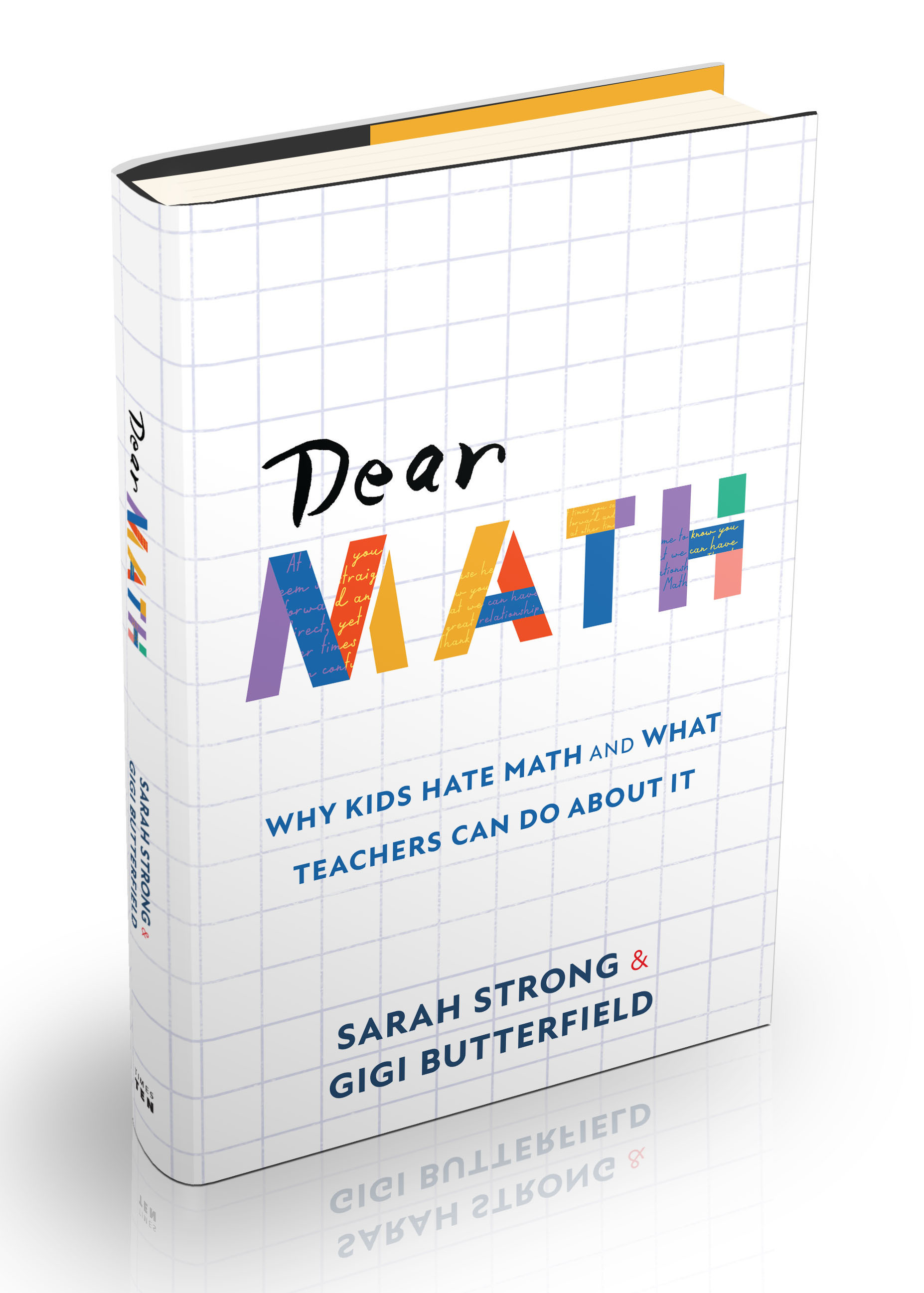Convincing Students Math Is Beautiful, Fun, and Powerful
Sep 03, 2023
Sarah Strong on students learning to love math.
"If I had my students write Dear Math letters, I could, as best as possible, come to understand their relationship with the discipline of math itself."
In Dear Math, Sarah and Gigi explore the complexity of math through the understanding displayed by students in Dear Math Letters. These letters are a gateway into students' minds. By using their current understandings, we can start students on a new path where they see the beauty, fun, and power in math.
Math Is Beautiful
Beauty refers to a combination of qualities, such as shape, color, or form, which pleases the aesthetic senses, especially sight. Some student letters mention a visual beauty in math, particularly when they reflect on symmetry in art pieces and final art products, but few reference this visual type of beauty when speaking about their math experiences as a whole.
Beauty more frequently shows up in student letters in the feeling of a “beautiful experience." Many students describe this as satisfaction because of how things work together. Quotes like “You make us the best we can possibly be,” and “You are a puzzle I was excited to solve,” all speak to cerebral feelings of a sense of beauty that a particular piece of math learning made them feel. We want to show all students this type of beauty.
Throughout a unit or project, students are in a continual process of creating and iterating work that is growing in detail, complexity, and connectedness. Throughout this process, it becomes increasingly beautiful and represents their learning. Students will see this beauty if they are given the chance to go back and reimagine their learning process.
Portfolios and summaries of learning offer an opportunity to step back before reflecting, because in the cycle of compiling portfolios, students return to their work throughout the unit or project, often revise it to make it better, and then metacognitively discuss the entire process with given prompts. Portfolios and summaries of learning help our students discover their capacity to create mathematical beauty as they explore their own creative process again.

Math Is Fun
Fun and play are important in life and in math class, but some types of fun are cloaked in gamification and gimmicks that undermine community and the true spirit of mathematics. So how might we spark fun and play in our math classes with depth and authenticity?
Math instructor Howie Hua is one of my favorite people to follow on Twitter. He creates memes that are grounded in mathematics and are sure to get you laughing out loud. This gave me the idea to bring fun and joy to math class, so I gave it a try in lieu of creating summaries of learning for their portfolio.
The students performed this assignment beautifully and had lots of laughs along the way. As they critiqued the memes with each other, they had to assess why the construction of the meme made sense or was mathematically provocative. The conversations in the critique sessions were deeply grounded in mathematical reasoning and sense-making in a way that I might not have come to without the memes.
Joey Kelly and Xi “CiCi” Yu are the curators of a beautiful site called “Play With Your Math." The exercises on this site are open, provocative, and exploratory. When implemented in a way that centers student ideas and thinking, they’re a lever for fun and intellectual empowerment.
My colleague Chris Nho used Play With Your Math problems for summer school a few years back. Each day, the students logged onto Zoom and engaged in an exploration of a problem. They would share their exploration and learning from the week, both in content and skills. This group of students was unsuccessful during the regular school year, but by using play in math, they were able to create new identities as mathematicians grounded in reasoning, problem-solving, and, most importantly, fun!

Math Is Powerful
While students themselves rarely use the term “powerful” in their letters, a certain category of student responses spoke to something big and life–or mind-altering, and the best classification we could think of for these ideas was “powerful.”
Some student letters speak to a feeling of math having power over a person and their emotions or of being truly “taken” by the study of it. This is adjacent to another idea we see in student writing, which is that math has the power to give students something they were missing. This is seen in quotes like “You’re my only logic in a sea of creativity and subjectivity” and “You scratch an itch in my unconscious.”
Another handful of student quotes that speak of the power math has to help individuals and the world. The ideas felt to us like math has an extra element of “power” beyond just the utilitarian need. These quotes sound like “Everything makes sense with you,” and “You are the greatest gift to humanity."

In her blog on Creative Maths entitled “Mathematics is Powerful,” Dr. Nic speaks to these same themes that have emerged in her conversations. She says that the elements of mathematical fun, play, and logic that many find purpose in are great, but they do not encompass everyone’s experience with math.
She claims that “powerful” is exactly the word to describe math, as it gives credence to all the ways of knowing and doing mathematics in service of self-growth and betterment and for world betterment. She states, “At a global level, mathematics saves lives, powers the internet, improves our daily lives, and will save the human race from destruction. At a local level, mathematics enables businesses to prosper, allows us to find our way, helps us make sensible food decisions, and allows us to create works of art.”
Students will often make unusual connections in mathematics. Keeping my ears open for creative mathematical thinking is one of the greatest joys of my career.
I employ carefully crafted projects that give students the opportunity to bring their full selves and creativity to the classroom each day. Through all of this, I have ignored my own conceptions of what it means to be mathematically correct and articulate and instead respond to and celebrate the students’ own ways of being mathematical and creating important work for our project.
Math can be explored and articulated in many different ways; our students often finding new ways to understand and explain math every day. That is true power.






